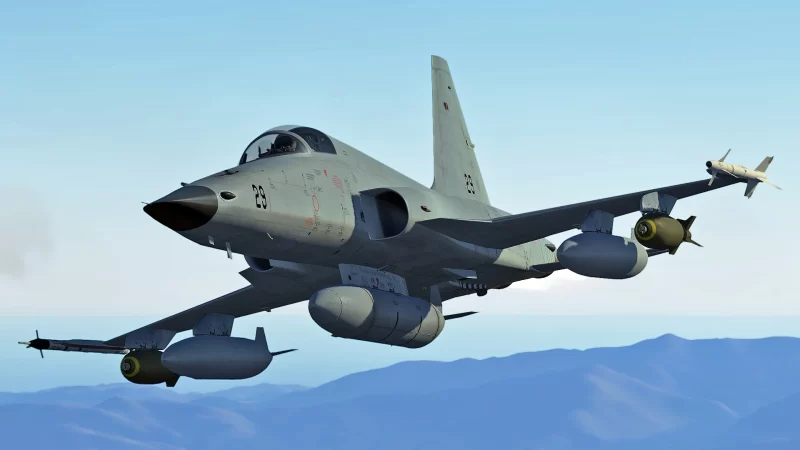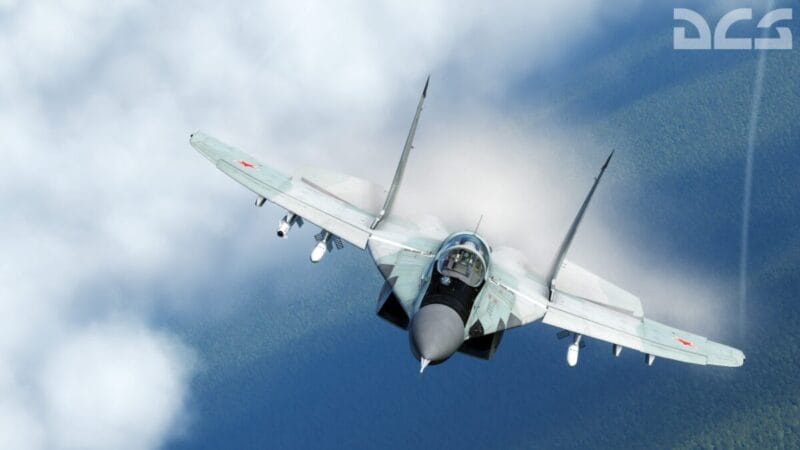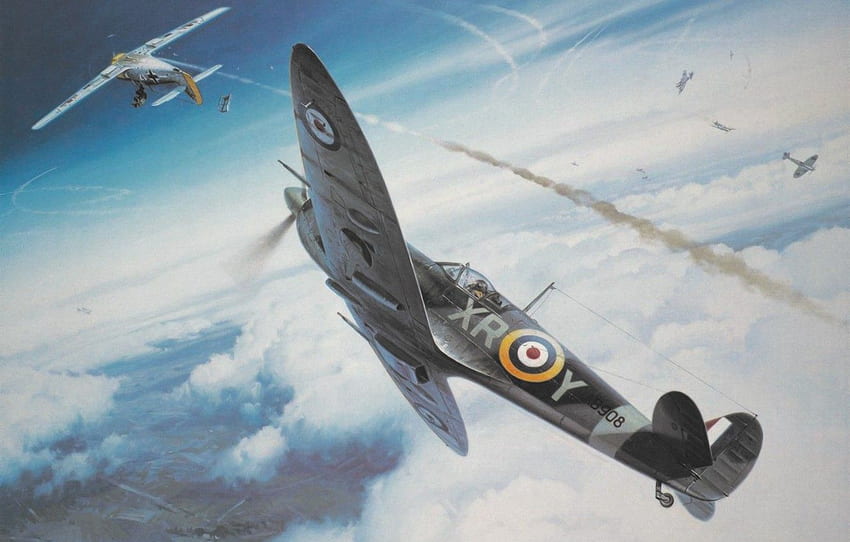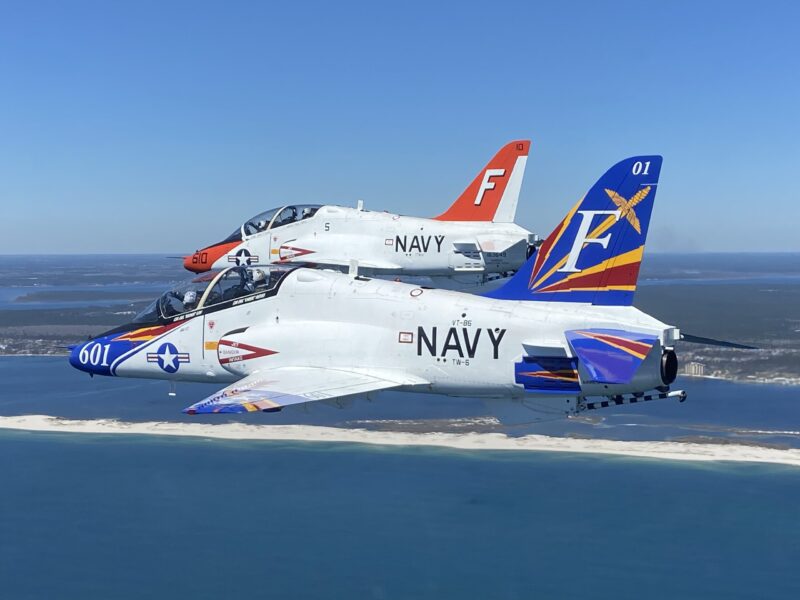How to Conduct a Stealthy Air Intercept in DCS World: F-5E vs MiG-21 Geometry Guide.
One of the most rewarding skills is conduct a stealthy air intercept in DCS World. It’s a skill that is challenging to be competent at so skills like this in DCS World multiplayer are very rewarding. Mastering the intercept will make you deadly and become hunter instead of hunted! You will understand this If you’ve ever been ambushed from behind by a MiG-21 and never seen them coming! If so you’re not alone!

Learning how to flip the script and end up on his six o’clock without being detected is a vital skill that separates the casual flyers from the tacticians in WWII, 80’s Cold War and modern combat servers. Real world fighter pilots practice intercepts often it seems so you should follow this guide in your mission planner and set up a practice mission. .
In this blog, we’ll walk through a real-world inspired intercept scenario using the F-5E Tiger II against a MiG-21, focusing on intercept geometry, headings, timing, and how to arrive silently and unnoticed in the enemy’s control zone.
Scenario: Setup for the Intercept
In real world or DCS World situations it not likely a target is going to fly a nice 260 or 180 deg track so using your compasses heading bugs to get a visual picture is a great start to making your situational awareness the best it can be. There’s a lot going on so practice the basic intercept procedure against a non maneuvering target for a while till you get the system to work.
Once you have it worked out at 400 knots you may wish to try slower speed adversaries like Bear bombers etc to modify the timing and get ready to intercept some big bombers before they obliterate your home base.
Interception Procedure.
Let’s lay out the initial conditions:
- You are flying the F-5E, heading 180° (due south).
- The enemy MiG-21 is flying directly toward you on heading 000° (due north).
- You are both at 400 knots and co-altitude.
- Range: 20 nautical miles (NM).
- The goal: intercept him stealthily and end up on his 6 o’clock, within the control zone (close trail, slightly low, unseen).
This is not a guns-blazing merge. Instead, this is a quiet, thoughtful stern conversion, modeled after real-world BFM and intercept tactics.
The Geometry of the Intercept
To defeat the head-on aspect and convert to a tail pursuit, we’ll use lag pursuit and offset geometry. This allows the enemy to unknowingly pass your position while you turn in behind him at the right moment.
Here’s a step-by-step intercept plan with headings, distances, and timing:
OVERVIEW of What we will FLY
- Red aircraft flies due north (000° heading).
- Blue aircraft begins 20 nautical miles directly south, also flying north.
- At 20 NM (T+0), the blue aircraft turns 45° right (heading 225°).
- At 13 NM (T+1:30), it turns left to heading 180°, now flying parallel but offset.
- At 8 NM (T+2:30), it turns left to heading 135° to begin closing in.
- At 4 NM (T+3:15), it turns left again to heading 000°, ending up behind the red aircraft.
The whole process of conduct a stealthy air intercept in DCS World is about timing so you need to operate your own stop watch in the cockpit and keep track of it. This is quite simple on the outside but you need to continually get BRA calls from the awacs so have a button set up to do so.

T+0: Initial Detection – 20 NM Range
- You: Heading 180°
- Enemy MiG-21: Heading 000°
- Action: Turn RIGHT 45° to heading 225°
- Reason: This creates lateral offset and puts you into a lag pursuit path. You’re aiming to delay the merge and increase distance on the side axis.
- Hold for: ~90 seconds
At this closure rate (combined 800 knots ≈ 13.4 NM/min), you’re closing fast. The MiG will blow past your original track.
T+1:30 – About 13 NM Range
- Action: Turn LEFT back to heading 180°
- You’re now parallel to his flight path but offset and slightly behind.
- This prevents a head-on merge and positions you in a silent trail path.
Hold this heading for 60–90 seconds while the MiG continues unaware.
T+2:30 – Approximately 8 NM Range
- Action: Turn LEFT again to heading 135°
- This is your cut-in maneuver. You’re beginning to angle back toward the MiG’s flight path.
- Hold for: ~30–45 seconds
He’s now well ahead of you, assuming you’re still in front—he has no idea you’re swinging behind.
T+3:15 – Close-in Phase (3–5 NM Range)
- Action: Turn LEFT again to heading 000°
- You are now behind the MiG, slightly offset and trailing.
- Begin visual acquisition or radar use depending on your server rules and settings.
- Small throttle and angle adjustments will help you settle into the control zone — ideally 2,000 to 3,000 feet behind and slightly below him.
- Latest CPU’s Available Now – Amazon.com
- Get a NEW GPU Best Performance – AMAZON.com
- Upgrade RAM Here today – AMAZON.com
- Prebuilt PC Options – AMAZON.com
The Goal: Entering the Control Zone
The control zone is a zone directly behind the enemy aircraft, typically:
- 1,500–3,000 feet aft
- Offset left or right
- Slightly low
- From here, you can maneuver for a guns kill or monitor the target without being seen.
This geometry sets you up for a perfect snapshot or tracking shot, all while remaining unseen and unchallenged.
Why This Works
This approach isn’t magic — it’s energy management and spatial awareness. By turning off to the side and letting the MiG pass, you build space and time. When you finally turn back in, you’re no longer in front of him — you’re behind and in control.
This method:
- Avoids triggering his visual scan.
- Keeps you out of radar/IRST range.
- Preserves energy by avoiding sharp turns or afterburner use.
- Makes you the ambusher — not the target.
Quick Summary Table
| Phase | Action | Heading | Duration | Range |
|---|---|---|---|---|
| Initial Offset | Turn right 45° | 225° | 90 seconds | 20–13 NM |
| Parallel Leg | Turn back parallel | 180° | 60–90 seconds | ~13–8 NM |
| Intercept Start | Turn left to cut in | 135° | 30–45 seconds | ~8–4 NM |
| Final Positioning | Turn into target’s heading | 000° | Adjust as needed | ~3 NM |
Tips for DCS World Players
- Use radar in search mode only if realism or server rules allow.
- Practice this geometry offline against AI to build timing muscle memory.
- Learn to judge closure visually—not just by the F10 map.
- Always maintain situational awareness; multiple bandits often lurk nearby.
Modern radars have Track WHile Scan which does not normally show up on radar warning receivers RWR so use it if you can. If your in an older aircraft then having your radar on is like a beacon letting them know your there.
It can be more beneficial to keep the radar on standby until your ready to shoot. If your using IR missiles let the seeker head do the work and not notify the enemy you’ve made a successful interception.
The Complete Beginner’s Guide to DCS World
Welcome to the world of Digital Combat Simulator (DCS World), the ultimate flight combat simulation that brings the thrill of…
Comparing Real World Aviation Procedures to Flight Sim Techniques.
Flight simulators have grown into sophisticated training tools, bridging the gap between virtual flight and real-world aviation….
Mastering Dogfighting in DCS World and Falcon BMS: Max-Perform Your
This post covers essential techniques, cues, and parameters that new combat pilots need to dominate close-range dogfights in DCS World…

Full Guide: DCS Balkans Map + All Upcoming DCS World
Full Guide: DCS Balkans Map + All Upcoming DCS World Modules. Summary: Eagle Dynamics and OnReTech have officially announced DCS: Balkans,…
DCS World T-45 Goshawk Formation Flying for Beginners Tutorial .
Military Formation Flying in DCS: Your First Flight in the T-45 Goshawk. So, you’ve got your wings (virtually speaking), strapped into…
DCS WORLD T-45 Goshawk EASY Navigation for Beginners.
DCS WORLD T-45 Goshawk EASY Navigation for Beginners is simply that. We do our planning in the DCS World Editor…
How the U.S. Navy Trains Jet Pilots: A Complete T-45
Welcome to Letsflyvfr.com guide to T-45C Goshawk Training – How the U.S. Navy Trains Jet Pilots so you can train…
DCS WORLD – The MB-339 by IndiaFoxtEcho: A Complete Overview.
The MB-339 occupies a very particular niche in DCS World: it’s not a fighter, not a frontline attack jet, but…
How to Move DCS World to Another Drive – Tutorial.
Moving DCS World off your Windows drive is a great way to free up space especially with DCS now taking…
Conclusion
I hope you found this guide to Conduct a Stealthy Air Intercept in DCS World useful and as rewarding as I have. This is your opportunity no matter what aircraft you prefer to fly and in what ever situation from WWII to Cold war and Modern servers to become the hunter on your own terms. Good Luck!
Author
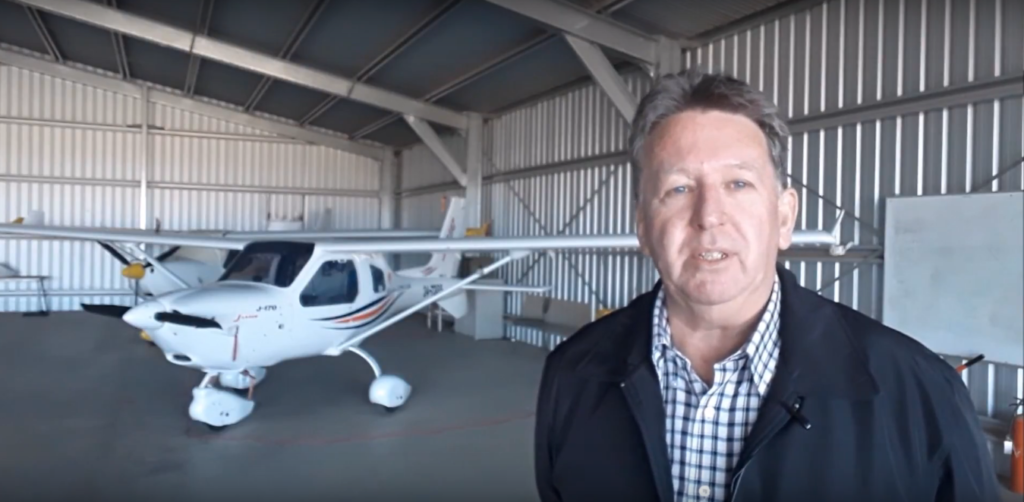
Brendon McAliece (Aka Gunnie) is a military veteran with 23 years working on Jet Fighters, their weapons systems and ejection seat/module systems as well as munitions and R&D. Involved with flight simulation since the 1980s, he has flown all the major flight simulators over the years.
He is an Australian expat who has lived in Malaysia, UK, Saudi Arabia and more recently Thailand. He is a multi-lingual blogger who loves to share his life experiences here on LetsFlyVFR.com and DreamingGuitar.com, with his lifestyle and Travel experiences Blog plus his Dreaming Coffee website.
Learn More @
DreamingGuitar.com – DreamingCoffee.com – LetsFlyVFR.com
( HOME – BLOG – SHOP – ABOUT )
As an Amazon affiliate I may benefit from qualifying sales.
